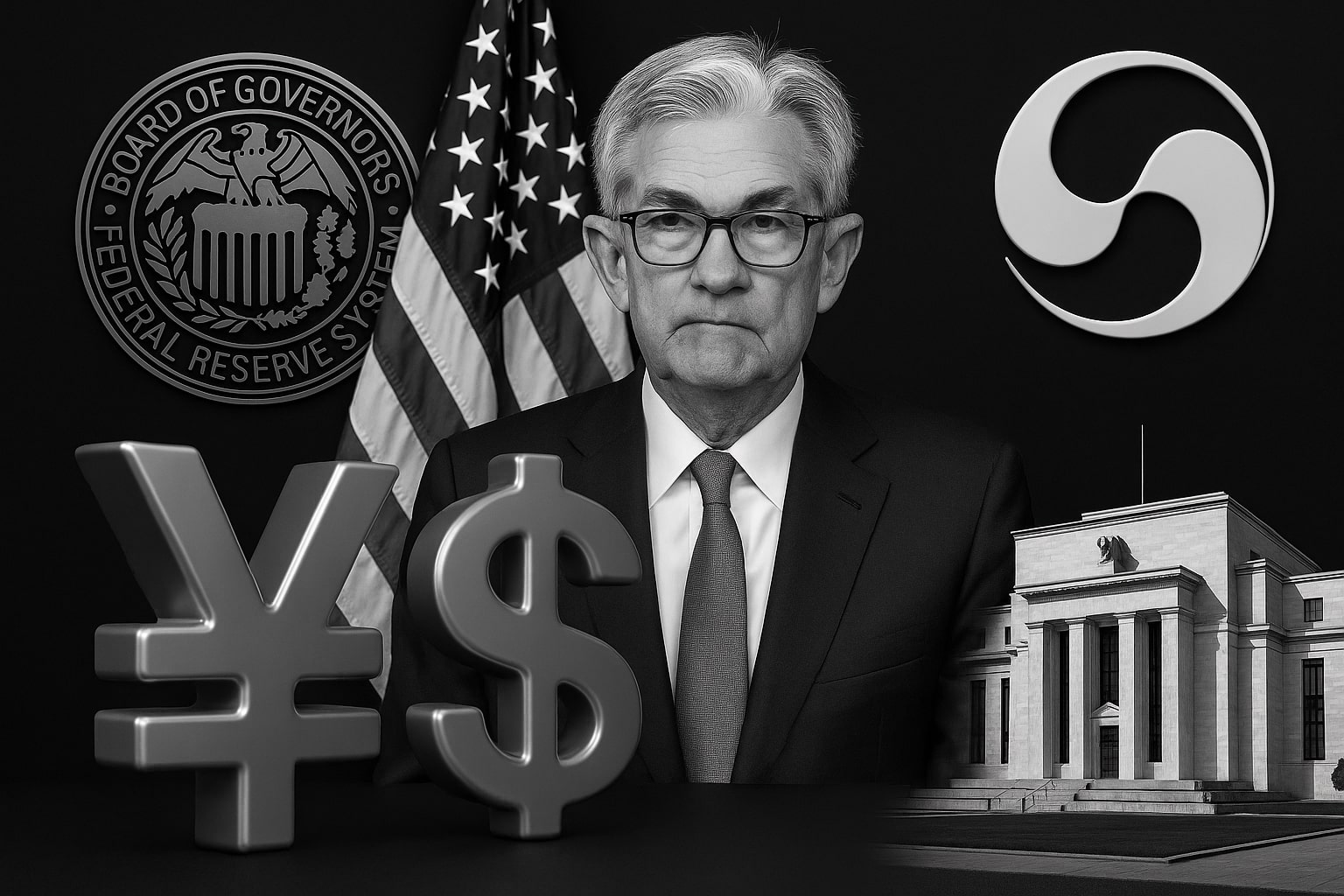USD/JPY Climbs Near 153.00 as Yen Hits Eight-Month Low on Political Shift and U.S. Dollar Strength
The USD/JPY pair surged to 153.03, marking a fresh eight-month high as Japan’s political transition and a stronger U.S. Dollar reinforced downward pressure on the Yen. The currency pair has gained 4.5% since early October, extending a six-day rally that has carried prices from 146.50 to the upper band of a critical resistance zone near 153.80–154.00. The move reflects a sharp divergence in monetary expectations between the Federal Reserve and the Bank of Japan (BoJ), coupled with risk-on flows after the Israel–Hamas ceasefire announcement reduced global safe-haven demand.
Takaichi’s Fiscal Push and BoJ Policy Delay Deepen Yen Weakness
The election of Sanae Takaichi as the new leader of Japan’s Liberal Democratic Party has altered investor sentiment sharply. Her economic stance — emphasizing aggressive fiscal stimulus and coordination between the government and the BoJ — has been interpreted as a green light for prolonged monetary easing. Takaichi stated that any BoJ decision “must align with government goals,” signaling limited appetite for tightening despite persistent inflation above 2% for over three years.
Her advisors, Etsuro Honda and Takuji Aida, confirmed that while a rate hike could occur in December or January, no immediate tightening is expected. Traders reacted decisively: the probability of an October 30 rate hike collapsed from 60% to 26%, according to market-implied odds. This shift triggered broad Yen selling, driving the USD/JPY pair to its highest level since February 2025.
Government Shutdown and Fed Minutes Reinforce Dollar Bid
While Japan’s policy drift weakened the Yen, the U.S. side of the equation added fuel. The U.S. Dollar Index (DXY) climbed to 99.50, its highest in two months, supported by safe-haven demand during the ongoing U.S. government shutdown, now in its ninth day. The standoff has delayed data releases but reinforced expectations that the Federal Reserve will deliver two 25-basis-point rate cuts — one in October and another in December — to cushion economic activity.
Minutes from the Fed’s September meeting showed near unanimity to start easing but divergence on whether one or two more cuts are appropriate. Despite the dovish tone, the Dollar has benefited from capital repatriation and the Yen’s inability to capitalize on narrowing yield spreads. Ten-year U.S. Treasury yields hover at 4.23%, versus Japan’s 10-year JGB yield of 0.97%, maintaining a 326-basis-point differential that continues to underpin USD/JPY’s upside bias.
Technical Picture: Bulls Face Heavy Resistance Between 153.00 and 154.00
The technical setup shows USD/JPY extending its advance within an ascending pitchfork pattern that began in September. Prices have surged more than 4.5% from the monthly low, now confronting a long-term resistance channel drawn from 2021 trendlines. The 153.00 handle represents the first obstacle, followed by 153.83 (1.618% Fibonacci extension of September’s rally) and 154.81 (78.6% retracement of the yearly range).
Daily charts show momentum stretched: the Relative Strength Index (RSI) hovers near 72, firmly in overbought territory. Short-term traders may seek profit-taking around 153.70–154.00, while support emerges at 151.62–151.94, the 61.8% retracement zone, and 150.88–150.91, the August high confluence. A daily close below 150.88 would signal broader exhaustion, while a breakout above 154.00 could pave the way for 156.26–157.19, aligning with November 2024 highs and the current year’s open.
Order Flow and Positioning: Speculators Trim Yen Shorts, Institutions Add Dollar Exposure
CFTC data reveals that speculative short positions in the Yen remain near extreme levels but saw a modest 2.7% reduction this week, suggesting partial profit-taking. Institutional funds, however, increased net long exposure to the Dollar by 8,000 contracts, reinforcing the bullish macro bias. The OrderFlow Intel Score for USD/JPY sits at +7, reflecting dominant buying pressure with moderate volatility.
Volume metrics show average daily turnover up 18% week-over-week, consistent with elevated directional conviction. However, volatility compression within the 152.10–153.30 range hints that major participants are awaiting Fed Chair Jerome Powell’s speech and Vice Chair Michelle Bowman’s remarks for directional confirmation.
Macro Context: Inflation Stubborn, Growth Solid, but Policy Coordination Key
Japan’s economy expanded for a fifth consecutive quarter through June, buoyed by wage growth and stable exports. Yet policymakers remain cautious. Inflation has stayed above 2%, but Takaichi’s team insists it remains cost-driven, not demand-led. Her emphasis on “demand-led inflation” indicates readiness for continued stimulus, effectively anchoring bond yields near zero. This dovish stance, combined with structural fiscal expansion, limits the Yen’s appeal.
In contrast, U.S. macro indicators — from consumer spending to industrial production — remain resilient despite the shutdown, keeping real yields elevated. Traders view the divergence as durable, especially as Japanese authorities continue to resist aggressive currency intervention despite verbal warnings from Finance Minister Katsunobu Kato, who reaffirmed that “excessive moves will be monitored” but stopped short of confirming direct action.
Geopolitical Flows and Safe-Haven Rotation
The announcement of the Israel–Hamas phase-one peace deal, endorsed by President Donald Trump, eased global risk tension and redirected capital from traditional havens like the Yen and gold into U.S. assets. The Dollar benefited across pairs: EUR/USD dropped to 1.1540, and GBP/USD fell below 1.3300, reinforcing broad Dollar strength. This macro alignment diminished the Yen’s role as a crisis hedge, further contributing to its decline.
Market Sentiment: Traders Eye Powell’s Speech and Next BoJ Meeting
Traders are now focused on upcoming Federal Reserve commentary and the BoJ’s October 30 policy meeting. The absence of clear intervention threats from Tokyo has emboldened speculative players, many targeting 154.00 as the next breakout trigger. However, sentiment remains cautious given the overbought momentum and rising probability of short-term correction if profit-taking accelerates.
The USD/JPY pair is now up 9.2% year-to-date, outperforming most major FX pairs. Daily averages show trading volume increasing alongside open interest, a sign that institutional positioning remains active. Short-term support lies near 152.10, while sustained consolidation above 153.00 would confirm market conviction toward another leg higher.
Verdict: USD/JPY — Bullish Bias Intact, Near-Term Overbought; Target 154.00–156.00
Data across fundamentals, positioning, and technicals confirms that USD/JPY remains structurally bullish, though stretched in the short term. The combination of Takaichi’s dovish policy stance, widening U.S.-Japan yield spreads, and macro-driven Dollar strength underpins continued upside potential. A near-term pullback to 151.60–152.00 could occur amid overbought momentum, but the broader trajectory favors further gains toward 154.00, and if broken, 156.00–157.00 remains the next major zone.
With fiscal expansion in Japan colliding with Fed-led Dollar resilience, the bias is Buy on dips — bullish while prices hold above 150.90, with upside targets into mid-October firmly set between 153.80 and 156.20.
That's TradingNEWS

















